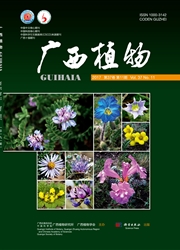

 中文摘要:
中文摘要:
西藏嵩草(Kobresia tibetica)为莎草科嵩草属多年生草本,根状茎短,秆密集丛生。生于海拔2 550~4 950 m的河滩地、湿润草地、高山灌丛草甸,分布于甘肃、青海、四川西部、西藏东部,其根系发达,喜湿,耐寒,生活力强。西藏嵩草繁殖以营养繁殖为主、有性繁殖为辅,其茎叶茂盛,有较高的营养价值,产草量高,是青藏高原夏、秋两季的主要放牧饲草。该研究以青藏高原高寒沼泽化草甸的建群种和优势种——西藏嵩草为材料,对影响其ISSR-PCR反应的因素(Mg~(2+)、Taq DNA聚合酶、dNTP、引物和模板DNA)进行5因素4水平的正交试验,以确定西藏嵩草ISSR分析的最佳反应体系,并筛选适宜的ISSR引物及各引物的最佳退火温度。结果表明:建立了适宜于西藏嵩草ISSR-PCR反应的最佳体系为20μL反应液中包括10×PCR buffer 2μL、1.5mmol·L~(-1)Mg~(2+)、1.0 U Taq DNA聚合酶、0.100 mmol·L~(-1)dNTP、0.3μmol·L~(-1)引物和30~40 ng DNA模板;同时从100条ISSR引物中筛选出了扩增结果清晰、稳定的12条引物,各引物的最佳退火温度为48.0~53.2℃(引物不同,其最佳退火温度也不同);西藏嵩草ISSR-PCR适宜的扩增程序为首先预变性94℃ 5min,然后变性94℃ 20s、复性48.0~53.2℃ 1min、延伸72℃ 80s、38个循环,最后72℃延伸6min。体系稳定性验证结果表明,该体系在西藏嵩草其他样品中所得条带清晰且多态性丰富,为后续西藏嵩草的遗传多样性分析和优良牧草种质资源筛选研究奠定了基础。该研究结果对以西藏嵩草为优势种的高寒沼泽化草甸研究及湿地生态系统的修复和保护具有重要意义。
 英文摘要:
英文摘要:
Kobresia tibetica,belonging to the genus of Kobresia and the family of Cyperaceae,is a perennial herb. The rhizomes of K. tibetica are short and culms are densely tufted. It is mainly distributed in Qinghai,Gansu,west of Sichuan provinces and east of Tibet Autonomous Region at altitudes ranging from 2 550 m to 4 950 m and can be found in alpine swampy meadows,weedy plains,marshes and riversides. The root system of K. tibetica is developed. Besides,it is hygrophilous,resistant to cold and strong in vitality. For the reproduction of K. tibetica,vegetative propagation is prior to sexual propagation. K. tibetica plants are of highly ecological and economic importance. The stem and leaf of K. tibetica are luxuriant. K. tibetica contains high levels of crude proteins and fats and is preferred by livestock over other plants found on the plateau. The production of K. tibetica grass is of high yield. As a consequence,it is the major grazing forage grass of summer and autumn in Qinghai-Tibet Plateau. Furthermore,K. tibetica is the constructive and dominant species of alpine swamp meadows in Qinghai-Tibet Plateau. K. meadows are also highly involved in carbon storage and serve as important carbon sinks in China. Therefore,K. tibetica was chosen as the research object in this study. In order to establish the suitable Inter Simple Sequence Repeats Polymerase Chain Reaction( ISSR-PCR) system in K. tibetica,factors which affect the ISSR-PCR amplification,such as magnesium ion( Mg~(2+)),Taq DNA polymerase,dN TP,primer and DNA template,were optimized and selected by orthogonal designed experiment of five factors in four levels. In addition,suitable ISSR primers and the annealing temperature of selected primers were screened from 100 ISSR primers by gradient PCR. As a result,the optimal reactions of ISSR-PCR in K. tibetica were performed in a 20 μL volume containing 2μL 10× PCR buffer,1.5 mmol·L~(-1)Mg~(2+),1.0 U Taq DNA polymerase,0.100 mmol·L~(-1)dNTP,0.3 μmol·L~(-1)primer and 30-40 ng temp
 同期刊论文项目
同期刊论文项目
 同项目期刊论文
同项目期刊论文
 Evidence of the Matthew effect in scientific research on mammals in the Chinese First-class National
Evidence of the Matthew effect in scientific research on mammals in the Chinese First-class National A new species of the genus Triplophysa (Nemacheilinae), Triplophysa qilianensis sep. nov, from Qingh
A new species of the genus Triplophysa (Nemacheilinae), Triplophysa qilianensis sep. nov, from Qingh 期刊信息
期刊信息
